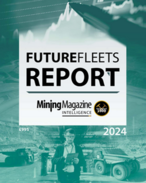MSHA announced that approximately 99% of the respirable coal mine dust samples collected from April 1, 2016, through June 30, 2016, were in compliance with the agency’s coal mine dust standards.
In 2014, the department published a final rule that closed many loopholes in the dust-sampling program that had left miners exposed to the unhealthy dust. The landmark rule also included requirements for more frequent sampling of the mine air and use of a new sampling device and other reforms.
For the recent sampling, the agency analyzed more than 20,000 underground coal mine operator samples using the new, cutting edge Continuous Personal Dust Monitor that provides miners with dust results in real time during the working shift. About 99% were in compliance.
These results correspond to the respirable dust samples collected from August 1, 2014, through January 2016, during Phase I, when 87,000 dust samples were collected from surface and underground coal mines by MSHA and coal mine operators. Nearly 99% of those samples met the dust concentration limit.
Assistant secretary of labor for mine safety and health Joe Main said: “These positive results are due to the extraordinary efforts of MSHA and industry working to clean up the air that miners breathe and successfully implement the critical respirable dust rule to protect miners from a disease that has claimed tens of thousands of lives.
“The nation’s coal miners are better protected from debilitating and deadly black lung disease than ever before, but we still have much more work to do to prevent black lung so that miners can spend a career as a miner and not fear the disease.”
Phase III of the rule begins August 1, 2016, and will lower the current respirable dust level of 2.0 mg per cubic metre to 1.5 mg per cubic metre of air.
MSHA’s analysis of the sampling results from Phase I found that more than 97% of the samples collected would have met compliance at the lower level. The results from Phase II show that more than 98% would have been in compliance at the lower level.
Prolonged exposure to respirable coal mine dust causes lung diseases, such as coal workers’ pneumoconiosis, emphysema and progressive massive fibrosis. Collectively known as black lung, these diseases can lead to permanent disability and death.
The National Institute for Occupational Safety and Health estimates the disease caused or contributed to the death of more than 76,000 miners, while more than $45 billion in federal compensation benefits have been paid out to coal miners disabled by black lung and their survivors. Evidence indicates that more still needs to be done as miners – including young miners – continue to be diagnosed with the disease.























